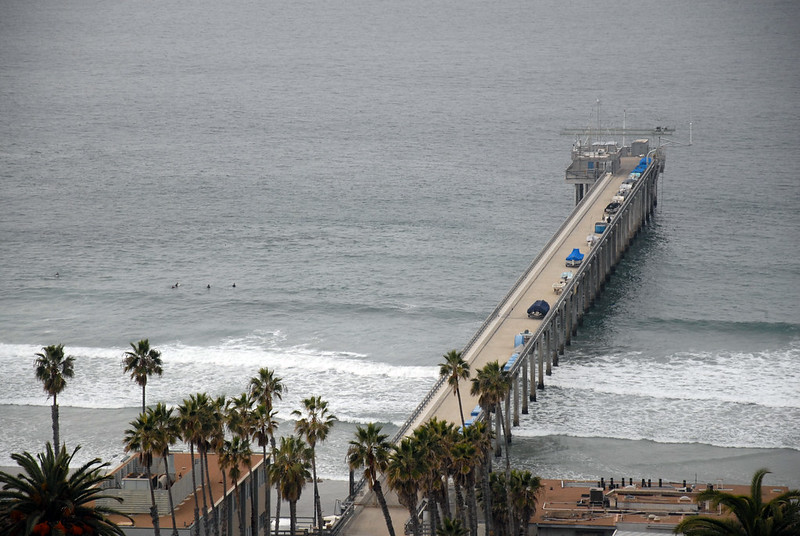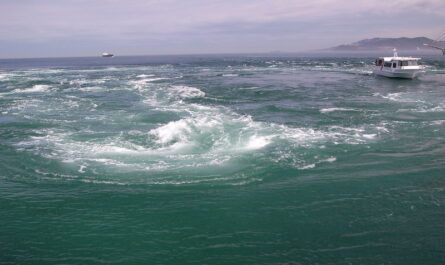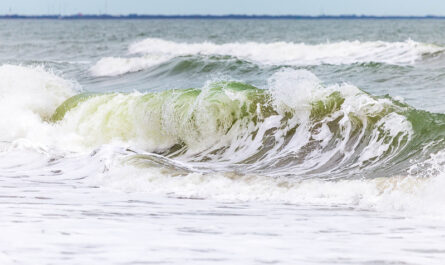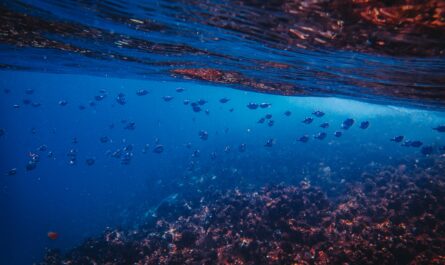The Atlantic Ocean, spanning over 41 million square miles, is one of the most studied yet least understood bodies of water on Earth. Beneath its waves lies a vast, mysterious world of uncharted depths, strange creatures, and untapped knowledge. Over the years, advances in technology have significantly enhanced our ability to explore and understand the deep sea, revealing insights into marine ecosystems, geological formations, and the broader implications for our planet.
This article delves into the evolution of oceanographic research in the Atlantic, highlighting groundbreaking technologies and discoveries, and emphasizing the importance of continued exploration for science, conservation, and humanity’s future.
The Importance of Oceanographic Research in the Atlantic
1. Biodiversity Hotspot
The Atlantic is home to an astonishing array of marine life, from microscopic plankton to massive whales. Its diverse habitats, including coral reefs, seamounts, and deep-sea trenches, support species found nowhere else on Earth.
- Unique Ecosystems: The Sargasso Sea, hydrothermal vents, and abyssal plains are critical to understanding marine biodiversity.
- Endangered Species: Research helps protect vulnerable species like the Atlantic bluefin tuna and deep-sea corals.
2. Climate Regulation
The Atlantic plays a pivotal role in regulating Earth’s climate through processes such as heat absorption, carbon sequestration, and nutrient cycling.
- Ocean Currents: Systems like the Gulf Stream and the North Atlantic Drift influence global weather patterns.
- Carbon Sink: The Atlantic absorbs significant amounts of carbon dioxide, mitigating the impacts of climate change.
3. Geological Insights
The Atlantic’s geological features, such as the Mid-Atlantic Ridge and the Puerto Rico Trench, provide valuable information about plate tectonics, volcanic activity, and Earth’s geological history.
Historical Context of Atlantic Oceanographic Research
1. Early Explorations
The quest to understand the Atlantic dates back to ancient civilizations, with early seafarers navigating its waters for trade and exploration.
- The Challenger Expedition (1872–1876): Marked the beginning of modern oceanography, laying the groundwork for future research.
- Cable Laying: The mid-19th century saw the Atlantic’s first undersea telegraph cables, sparking interest in seafloor mapping.
2. Mid-20th Century Advances
Technological innovations during and after World War II revolutionized oceanographic research.
- Sonar Technology: Originally developed for submarine warfare, sonar became a vital tool for mapping the seafloor.
- Deep-Sea Submersibles: Vehicles like the bathyscaphe Trieste enabled the first manned dives into deep trenches.
Technological Innovations in Atlantic Oceanography
1. Autonomous Underwater Vehicles (AUVs)
AUVs have transformed deep-sea exploration, allowing researchers to reach depths and areas previously inaccessible.
- Examples: Vehicles like Alvin and the Nereus have explored hydrothermal vents and deep-sea trenches.
- Capabilities: Equipped with cameras, sensors, and sampling tools, AUVs collect data on temperature, salinity, and biological activity.
2. Remotely Operated Vehicles (ROVs)
ROVs are unmanned, tethered vehicles controlled from a surface vessel, providing real-time video and data from the deep sea.
- Applications: Studying shipwrecks, inspecting underwater cables, and observing marine life.
- Notable Expeditions: ROVs have been used to explore the Titanic wreck and hydrothermal vent systems.
3. Ocean Observatories
Fixed platforms equipped with sensors and communication systems provide continuous data on ocean conditions.
- Key Projects: The Ocean Observatories Initiative (OOI) and the European Multidisciplinary Seafloor and Water Column Observatory (EMSO).
- Benefits: Real-time monitoring of ocean currents, temperature, and biological activity aids in understanding long-term trends.
4. Satellite Technology
Satellites provide a bird’s-eye view of the Atlantic, offering critical data on surface temperatures, sea level rise, and ocean color.
- Applications: Tracking algal blooms, mapping currents, and studying the impacts of climate change.
- Examples: The Copernicus Marine Service and NASA’s Aqua satellite.
5. DNA and Genomic Technologies
Advances in molecular biology have enabled researchers to study marine life at the genetic level.
- Environmental DNA (eDNA): Collecting water samples to detect the genetic material of marine organisms without capturing them.
- Applications: Understanding species distribution, population dynamics, and genetic diversity.
6. Artificial Intelligence (AI) and Big Data
AI and machine learning analyze massive datasets from oceanographic research, identifying patterns and predicting trends.
- Applications: Modeling climate impacts, tracking fish migrations, and automating species identification.
- Notable Tools: AI-driven drones and algorithms for data analysis.
Major Discoveries in the Atlantic
1. Hydrothermal Vents
First discovered in 1977, hydrothermal vents on the Mid-Atlantic Ridge revealed ecosystems powered by chemosynthesis, independent of sunlight.
- Unique Life Forms: Species like tube worms and vent crabs thrive in extreme conditions.
- Scientific Impact: These discoveries reshaped our understanding of life’s adaptability and origins.
2. Deep-Sea Coral Ecosystems
Atlantic research has uncovered extensive coral habitats at depths of over 1,000 meters, supporting diverse marine life.
- Key Areas: The Lophelia reefs in the North Atlantic are biodiversity hotspots.
- Conservation Significance: These findings have led to the designation of marine protected areas (MPAs).
3. Seafloor Mapping
Detailed mapping of the Atlantic seafloor has revealed geological wonders, including underwater mountains, canyons, and ridges.
- Mid-Atlantic Ridge: The longest mountain range on Earth, largely underwater, was mapped in detail through sonar technology.
- Puerto Rico Trench: The deepest point in the Atlantic, reaching depths of over 8,600 meters.
Environmental Challenges and Oceanographic Research
1. Climate Change Impacts
Oceanographic research helps us understand how climate change is altering the Atlantic’s ecosystems.
- Rising Temperatures: Studies reveal shifts in species distribution and increased coral bleaching events.
- Ocean Acidification: Research shows how increasing CO2 levels affect calcifying organisms like corals and shellfish.
2. Plastic Pollution
The Atlantic contains significant amounts of microplastics, posing risks to marine life and human health.
- Key Findings: Research has quantified the scale of plastic pollution and its impact on food webs.
- Solutions: Oceanographic data informs cleanup efforts and policy changes.
3. Overfishing
Overfishing threatens Atlantic ecosystems, with research highlighting declining fish stocks and disrupted food webs.
- Research Applications: Stock assessments and tracking technologies support sustainable fisheries management.
The Future of Oceanographic Research in the Atlantic
1. Exploring the Unknown
Despite advances, much of the Atlantic remains unexplored. Future research aims to map uncharted areas and uncover hidden ecosystems.
2. Collaboration and Funding
Global partnerships and increased funding are essential for advancing Atlantic oceanography.
- Key Initiatives: The United Nations Decade of Ocean Science (2021–2030) aims to promote sustainable ocean use.
- Private Sector Role: Companies like Schmidt Ocean Institute support cutting-edge research.
3. Public Awareness and Education
Raising awareness about the importance of oceanographic research fosters public support and inspires the next generation of scientists.
Conclusion: Unlocking the Atlantic’s Secrets
Oceanographic research in the Atlantic is a journey of discovery that connects us to the planet’s past, present, and future. Through technology and collaboration, scientists are uncovering the mysteries of the deep sea, from hydrothermal vents to genetic blueprints of marine life. As we face unprecedented environmental challenges, understanding the Atlantic’s complexities is not just an academic pursuit—it’s a vital step toward ensuring the health of our oceans and the well-being of humanity.
The Atlantic holds endless possibilities for exploration and innovation. With continued investment in research and sustainable practices, we can unlock its secrets while preserving its beauty and bounty for generations to come.



